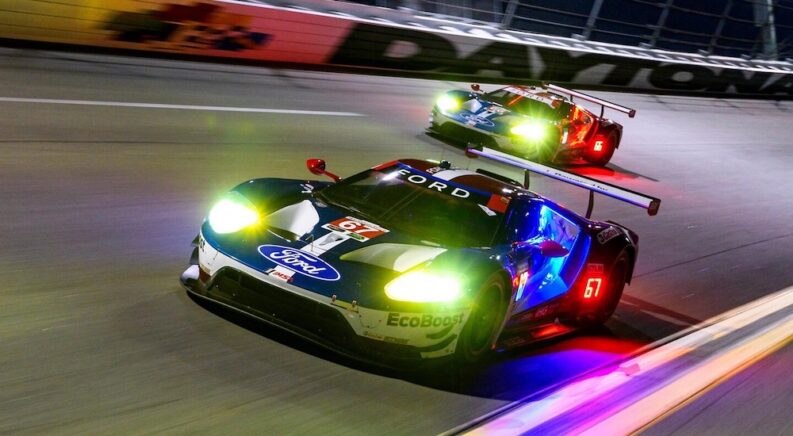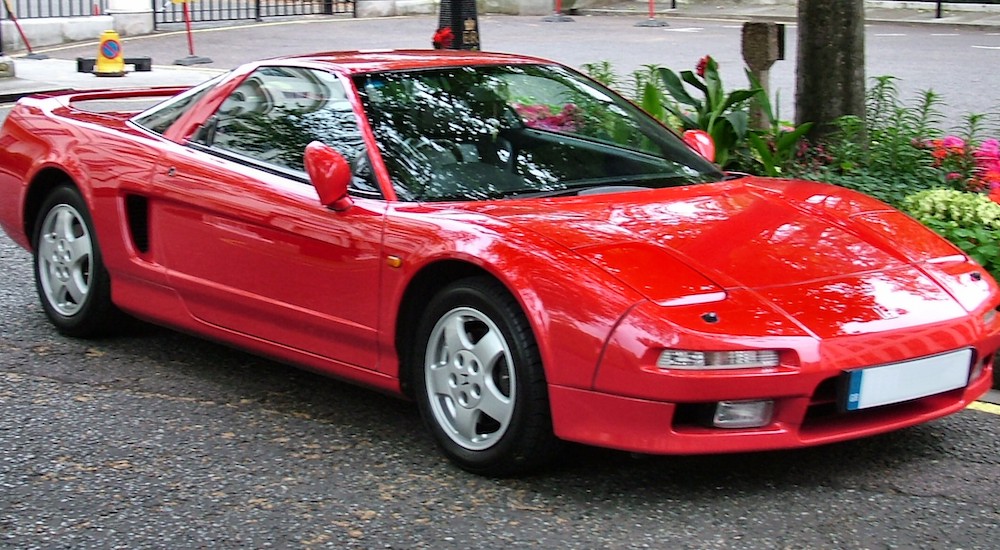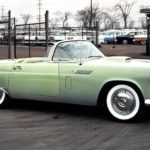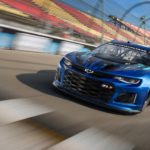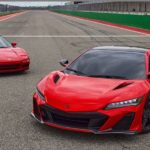“Iconic: of, relating to, or having the characteristics of an icon [a thing widely admired especially for having great influence or significance in a particular sphere]” – Merriam-Webster Dictionary
I try to limit the use of words like “iconic” in my writing. If every brand or model is iconic, none of them are. On the other hand, most automobiles worth writing about are that way because of their influence on our hearts, minds, and culture, how they change the industry as a whole, so they could reasonably be said to be “iconic.” Often, we think of iconic cars as seminal, classic, exotic, and rare, but there are plenty of powerfully significant vehicles that you might find at a used car dealership in your own hometown.
Don’t believe me? Here are some examples of what I think are the most iconic cars from a curated selection of the industry’s most popular brands. It’s a list I came up with by checking my intuition against that car’s influence or significance with regard to 10 criteria:
- Style
- Innovation
- Performance
- Rarity
- Driving feel / experience
- Competitive pedigree
- Timelessness
- Historic significance
- Pop culture impact
- Overall strength of design
Based on what I already knew about each car, it scored 1 or 0 for whether it made an impact through each criterion, and I added up the total. If the score was less than 8, I thought of a different model and tried it again, to ensure my list of icons was appropriately selective. Read on and see what you think about the most iconic models to come from:
Ford GT Lineage
Ford v. Ferrari was a rocket launch to the exosphere for a model that already flies far above anything else in the American automotive industry. From the GT40 race car of the 1960s, through the GT supercar of the 2000s, to the modern GT hypercar, Ford has repeatedly leveraged their financial power to produce a world-class performance vehicle which defies all logical expectations of the brand most synonymous with mass market economy vehicles.
It took three years and three attempts, two of them complete failures that led directly to massive improvements, for Ford to achieve the Le Mans prestige that a failed partnership with Ferrari had denied them. The 1-2-3 sweep and photo finish achieved by the GT40 in 1966 cemented the car’s place in history. Resurrecting the design was a natural choice to celebrate Ford’s 100th birthday in 2003. The only mid-engined American supercar at the time, it represented a peak of performance that Chevy and Dodge could only dream of. The 4,038 examples that were built now sell for five times their sticker prices, not something one could say of any other dot com era Ford.
Today, the GT lineage has come to a close, but not without one last great hurrah. The second generation model was released in 2016 to celebrate the 50th anniversary of Ford’s legendary Le Mans win. With sticker prices in the half million range, production limited to 1,350 units by the end of 2022 and track performance competing with the Porsche 911 GT2 RS, the Ford GT continues a tradition of asserting that the limits of American manufacturing are indisputably, “Whatever we damn well please.”
Mazda MX-5 Miata
To the question, “What is the most iconic Mazda?” I must respond with my favorite automotive acronym: “Miata Is Always The Answer.” I’ve never had the pleasure, but those who know from experience adore the MX-5’s brilliant recipe. Through four generations, Mazda has kept their roadster small enough that road-legal speeds are fun and engaging. The chassis design is praised both for how forgiving it is to inexperienced drivers and how precise it is to the pros.
While the car is known to respond gradually to major errors in a way that keeps it safe and can teach a driver where they went wrong, it also demands the utmost precision at the limit, and will penalize transgressions with crucial tenths off a lap time. The ever-popular Spec Miata racing series continues to offer a playground for drivers of all skill levels to make the most of the car which most embodies the “zoom zoom” mentality Mazda is known for.
When the Miata was introduced in 1990, it was practically a vanity project to resurrect the classic British roadster segment. Today, while every other model gets bigger and heavier, the ND Miata weighs a scant 100 pounds more than the original NA did 30 years ago, and features a near-identical footprint. To Car and Driver, its closest competition is the Porsche Boxster. To me, it’s an icon.
Chevy C2 Corvette Stingray
Every generation of the Corvette plays an important role in the classic American sports car’s story. Over 70 years and eight generations, the car has changed its core identity several times. It is my humble opinion that out of all of them, none so totally encapsulates the spirit of the whole like the C2 Stingray.
The C2 was more than the beautiful cruiser the original C1 was. Applying the lessons from racing concept cars, Chevy made it the legitimate threat to European sports cars that the C1 was intended to be. Nothing after the C2 would so effectively combine timelessness, relative performance, and intoxicating driving theater the way it did. The thunderous rumble of its V8 engine, the first “big block” 427, made 425 horsepower, enough for consideration as the most powerful car of the decade. It had its distinctive long, elegant hood and fastback body lines, with an especially famous split rear window on the 1963 model year. This was also the year that gave us the coveted Z06 package, which at the time was a secret “if you know, you know” option to skirt a ban on production race cars.
The C2 Corvette wasn’t the first Chevy I thought of, or even one of the first five or six, but it checks all the boxes. The farthest thing from generic, it remains beautiful and head-turning today, and firmly established the Corvette’s credibility as a legitimate sports car.
Honda/Acura NSX (First Generation)
When Mr. Wolf needed to make a thirty minute drive in ten minutes, in LA traffic, he did it in an NSX. (Now I’ve given you an excuse to watch Pulp Fiction again.) I’m permitting myself this one as a Honda because it’s legitimately marketed as a Honda everywhere except North America. I seriously considered the Civic, the Accord, or even the Integra/Civic Type R, but once again none of these met enough of the criteria for the term “iconic” to satisfy. The NSX, on the other hand, easily meets them all.
Developed with input from Ayrton Senna and targeting the Ferrari 328 as its benchmark, Honda’s mid-engine attainable supercar was the first to bring their signature VTEC technology to America. It featured the first all-aluminum semi-monocoque, a chassis refined lap by painstaking lap at the Nurburgring to eventually produce the best handling car in the world.
Don’t take my word for it. Gordon Murray was so enamored with the NSX that it served as his inspiration for the McLaren F1. Though the second generation never quite made the same waves, the original NSX is an indisputable icon as the spiritual sire to one of the greatest cars ever made.
Dodge Charger (First Generation)
The modern Dodge Charger, equipped with Hellcat engines, makes a legitimate case for itself as the greatest hooligan-mobile in history. The story of the Viper’s development, and the single-minded murder machine that the team cooked up, is one of the best of the modern era. But at the end of the day, no Dodge is as pervasive throughout our culture as the first generation Charger.
The late 1960s is a strange era to me. Being well before my time, the subtle differences between muscle cars and even the brands which made them are lost on me. Like modern crossovers, I feel they all pretty much look the same. But the Charger was the ultimate standout of the bunch. Simple lines, a long, lean form, and product placement everywhere from The Dukes of Hazzard to The Fast and the Furious contribute to the Charger becoming the halo car of pre-oil crisis muscle.
Its incredible success in NASCAR, in the form of the Dodge Charger Daytona and re-badged Plymouth Superbird, adds to the legend. Based on the Charger R/T but with additional aero components, Richard Petty won eight races in the Superbird in 1970, dominating enough that NASCAR restricted their 440 cubic inch engines to a mere 305 cubic inches in 1971. How many times has a racing organization been forced to change the rules or ban a car because the competition became so lopsided? That’s why I believe the Charger’s universal success and classic muscle make it Dodge’s most iconic car.
Jeep Wrangler
It seems strange to me that most blogs seem to consider the Grand Cherokee Trackhawk to be iconic. I think they’re off their sway bars, because nothing could be an easier pick than the most iconic Jeep.
It’s like the Kleenex of SUVs. Few car designs so comprehensively define a brand and a genre that when I say, “Jeep,” odds are you and everyone you know immediately imagines a Wrangler. Part of this comes down to familiar design. The Wrangler’s 80-plus-year lineage is still visually apparent, showing it remains a clear direct ancestor to the Willys MB. In fact, that’s why the Wrangler easily gets my pick instead of the CJ-5, which was in production for decades. The Wrangler is the continuation of the same idea, not a reimagining, so fundamentally it’s just a newer CJ.
Another part of my assessment is the Wrangler’s market dominance. Back in the CJ’s day, there were International Harvester Scouts, Ford Broncos, and Chevy Blazers mucking about. The Wrangler name appeared just as the Bronco’s was fading away, and the Blazer had become a shell of its former self. For 22 years, nothing else compared, especially in the US market. Serious overlanding was the exclusive domain of the Wrangler until the Bronco’s recent return. Was this a market devoid of competition, or a market so unfriendly to the genre that only one could remain? Either way, it undoubtedly made the Wrangler an icon.
What Makes an Icon for You?
The “most iconic” game is a great conversation starter. My brother suggested the Dodge Challenger Hellcat and the C6 Corvette. My father insisted on the Honda Prelude and Ford Mustang. A colleague of mine, who owns two Mustangs and commutes in an F-250, said Ford’s greatest icon is the Model T. The best part is, there’s no one “right” answer. It becomes a safe place to practice that most important form of debate, the kind where we learn something about one another’s perspectives.
What do you think? Are there other models from these great brands which are more admired for their significance or influence? Does “iconic” mean something else to you? Does it need to be admired, significant or influential? Can it be new, or ancient? Should it be rare, or ubiquitous? Is performance credibility required to be considered iconic? Let me know! Just…maybe don’t bring this one up at Thanksgiving, alright?

